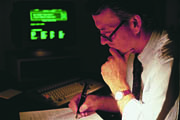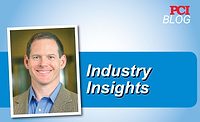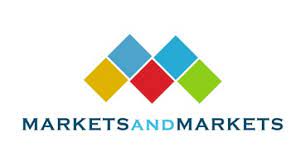
The CRM concept was developed over time, and terms such as Contact Manager and Sales Force Automation have been used. While the scope of these different types varies, they do have one common and overriding goal: managing customer and prospect information to improve sales efforts, service level, customer satisfaction, and profitability.
The scope, price and functionality of the many software solutions available vary, but the essence of them all is to bring information about a customer, supplier, or prospect to the user. Most cover address books, agendas and contact history, and some also include project management, sales forecasting, and document creation and tracking. Many organizations still maintain their customer records and documents in various file cabinets, on different computers and in a maze of directories. A good CRM will provide structure and retriveability so that a customer is not kept on hold if a key person is not available.
Why do companies acquire these systems? There are many reasons, including the following.
- Sharing information across a company saves time, money and effort in locating phone numbers, addresses, previously written offers/letters/faxes/e-mails, and other information.
- Having a common, company-wide depository of information allows for data to be entered only once, rather than having it entered by many people in multiple locations, saving considerable time and money.
- Improved customer service by having all pertinent information available to all concerned, rather than relying on people who may or may not be available.
- Personalized sales efforts and better and closer follow up.
- Centralized sales forecasting.
Some coatings manufacturers sell directly to consumers by way of their own or third-party outlets. In this case, CRM will follow a different approach than for those companies whose main customer base are other companies. SuperOffice, similar to some of the systems available, is a business-to-business oriented CMR system, which focus primarily on the latter.
In addition to those tasks that are shared by many other industries in terms of the overall functionality of CRM and sales support, chemical producers may also need to integrate sample tracking. This means that sales reps out in the field can automatically field sample requests, as well as having automated response once the sample has been sent for later follow up. An additional functionality may also be to track non-conformance and subsequent corrective action that customers as well as ISO and other quality certifications may require.
In-house use of CRM system's document tracking capabilities may also be implemented on the development side. This is often a project-oriented approach, in that it may include multiple companies where the documents in question are created using such specialized applications as Chemdraw.
Ideally, a company-wide CRM system should allow everybody in the organization access to customer information. However, there are companies who require that all or part of the information only be available to a select group. Most CRM systems allow for different levels of user privileges, and segmentation of databases (often a requirement when deploying a database to sales reps with fixed sales regions, or if a company has several regional offices).
CRM systems are sometimes developed in-house in large companies with internal IT resources. The main rationale behind custom development is that of custom fit. However, the cost and time requirements are often staggering, and the reliance on key personnel involved in the development effort can sometimes pose problems if these people decide to leave. The focus should be on the end-users, often sales and customer support reps, and managers who may not have the time, or organizations that do not have the resources, to act as laboratories for new systems.
CRM systems comes in many prices and sizes, from freeware downloaded from the Web, up to very intricate systems that can carry an initial price tag of $5,000/user, as well as considerable additional costs for custom fit and implementation by teams of external consultants.
The advantages of these high-end systems are high levels of custom fit capability, and the numerous functions that can be built in, Web-based order entry functionality being a pertinent case in point.
An alternative is the out-of-the-box solutions that some companies find meet their needs. In this case some functionality is sacrificed, but if ease of use is kept in focus, this may suffice for many companies.
Mobility is often a key consideration for a CRM system, as most sales people still conduct business with customers face-to-face. Some CRM solutions allow for synchronization with such tools such
as Palm and Windows
CE handheld computers, mobile phones, and so-called thin clients, where the application is accessed over the Web. One of the key advantages of Web-based version is centralized troubleshooting, and added security in that there is only one database to manage. Web-based CRM systems may provide the best solution for a company, but this is not at all a given for many firms in the chemical industry.
One important consideration when evaluating a CRM solution, or any other system, is ease of use relative to the general knowledge of software in an organization. One can argue that the focus should not be on how many functions can be built into the system, but rather how many functions will be used by the majority of users. If complexity is taken too far, one runs the risk of people not using the system. Most sales and customer support people are focused on just that; sales and customer support, not on learning complex software systems.
One notable feature that should be considered for companies doing business overseas or having overseas offices is to have a system that has country-sensitive addressing formats, multi-currency support for sales forecasting purposes, and multiple language support.
Tracking customer and prospect interactions are important. A CRM evaluation is not a matter for a company IT department alone, but something that should be driven by the sales function, and supported and communicated clearly by company management. Review your options on the CRM side; it is vital.
For more information on CRM, call 877/809.7145; e-mail eiriks@superoffice.com; or Circle Number 81.

Akzo Nobel Europe Chooses SuperOffice
Akzo Nobel's European offices have chosen SuperOffice as one of the main suppliers of CRM applications. A core contract was signed between the central purchasing department of Akzo Nobel and the Norwegian software vendor in December 1999. The contract supercedes a previous contract and now covers all SuperOffice products as well as service and training for any of the 1,800 companies and subsidiaries of Akzo Nobel and Acordis.According to Purchasing Account Manager Geert-Jan van Bommel, the main advantages of the software lie in the ease of implementation and the ease of use of the SuperOffice solutions. "Compared to other CRM offerings, SuperOffice is strong on pricing and has a short implementation time because of the Windows compatibility," he says.
Liv Bruun-Trulsen Akzo Nobel Chemicals Norway sales secretary, says the best feature of the software is the ease and speed with which to enter information in the program. "We started with SuperOffice around 1993, and this dramatically changed the way we worked," she says. "It has become very easy to send a fax or an e-mail, so we hardly use letters anymore.
"It is not just working on the computer that makes a difference. We also started to look very differently to clients. The sense of responsibility toward clients has increased because we know a lot more about them," Bruun-Trulsen says.
This screenshot of SuperOffice details the interactions that have taken place between 'our company' and 'North American Company.' In this example, a trace of all phone calls, minutes of meetings, and letters, faxes and incoming and outgoing e-mails are created in and tracked by the system. The documents themselves are created using such applications as Microsoft Word and Outlook Express. The system allows for a company-wide access and review such that these interaction are not tracked on an individual to individual basis only, but on a company to company basis -- which is most often the regime under which most chemical companies work.





Report Abusive Comment